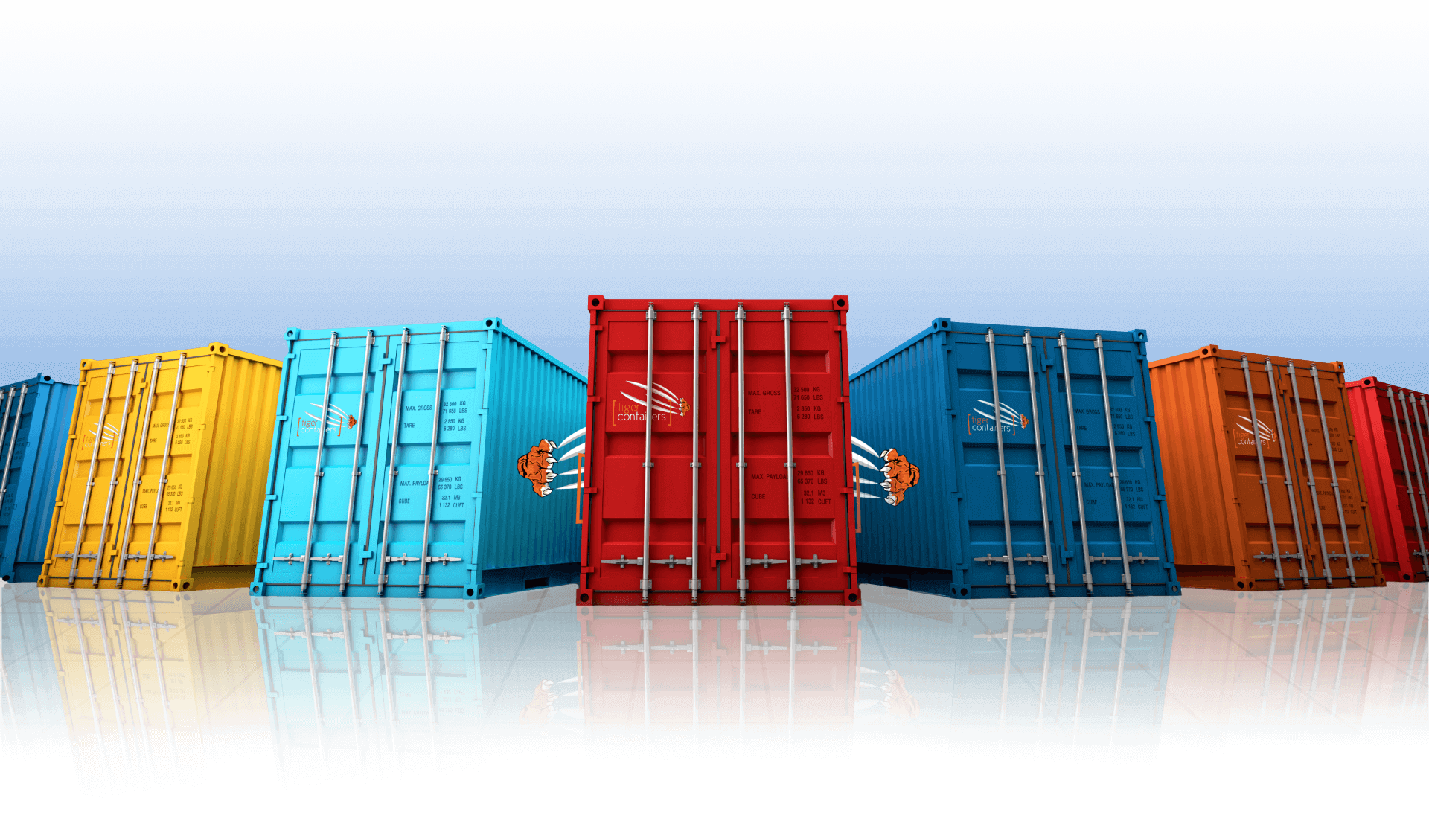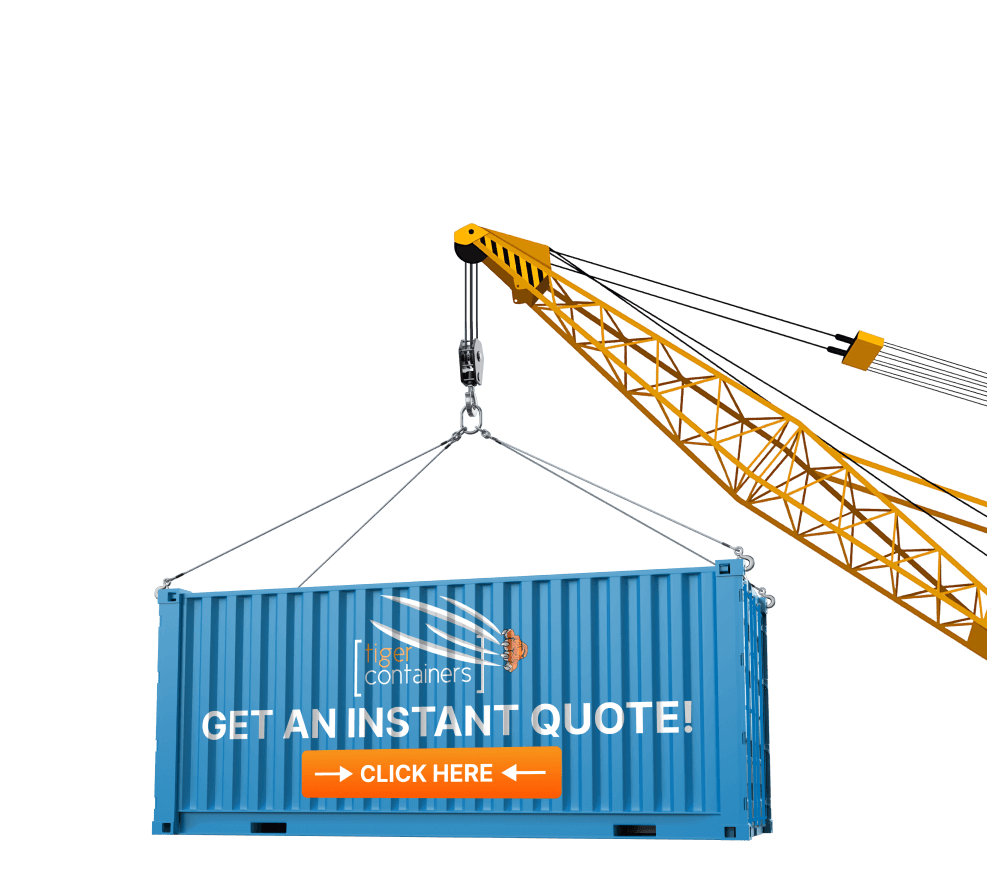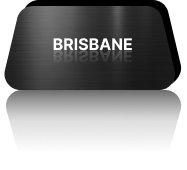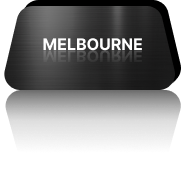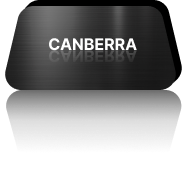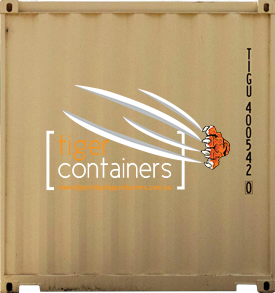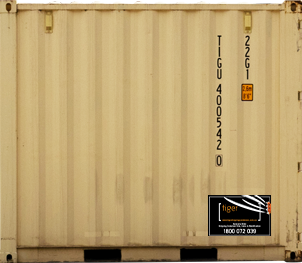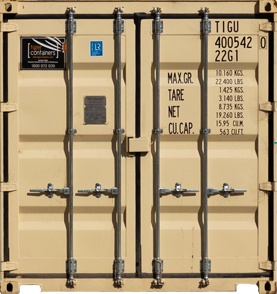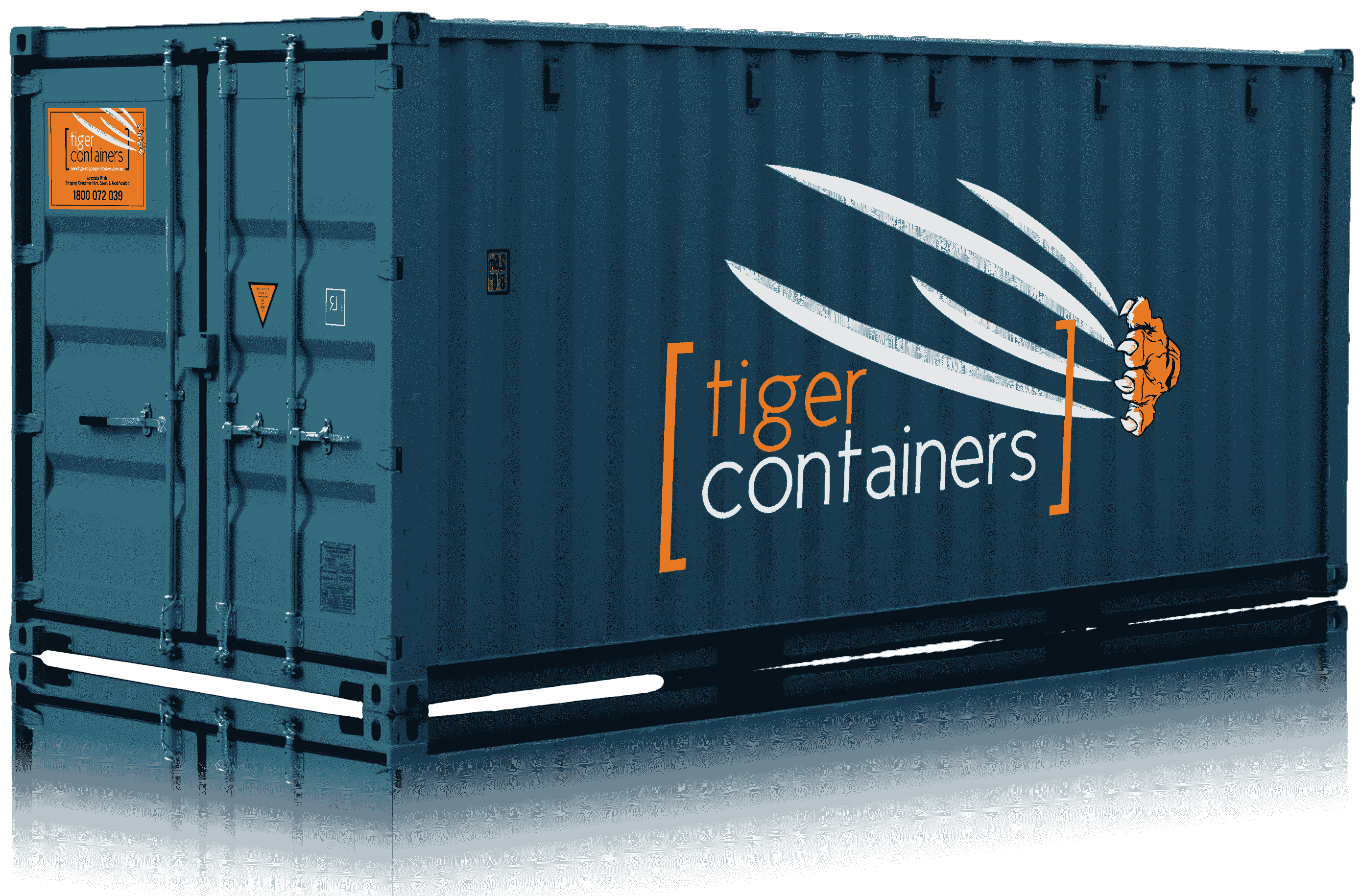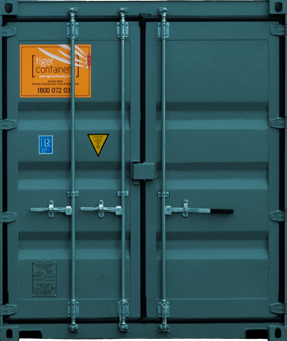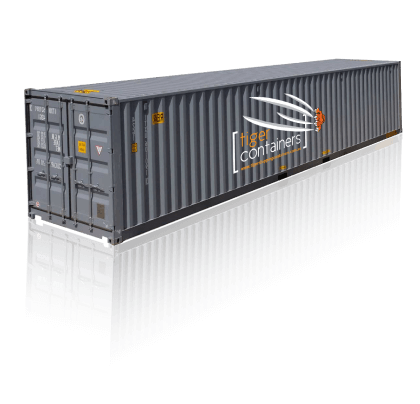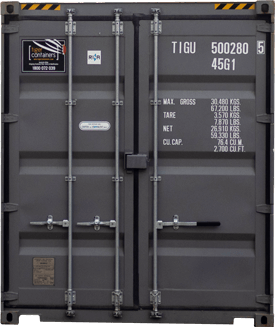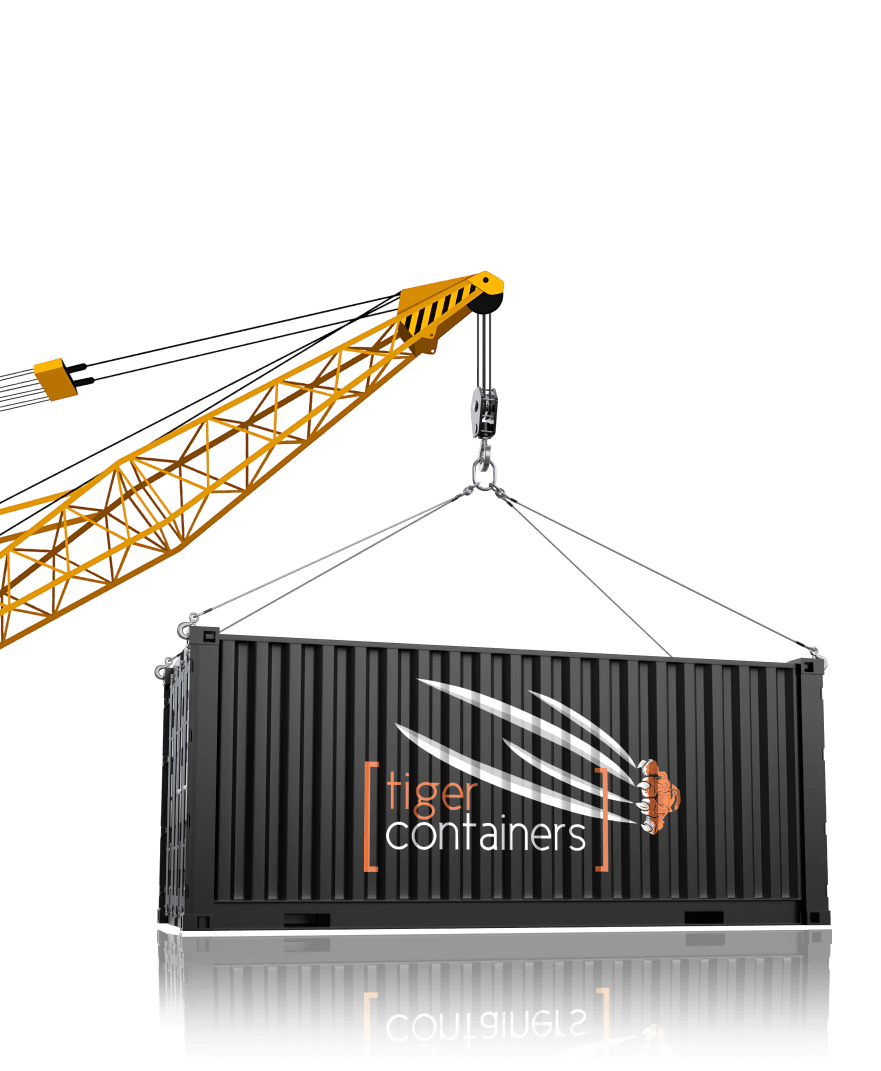SHIPPING CONTAINER DIMENSIONS | THE DEFINITIVE GUIDE
What size is a standard shipping container is the most common question in the entire shipping container industry! But with so many shipping container types out there, all of them having different shipping container dimensions, it’s often hard for the layperson to work out what size container they actually need!
With this in mind, how about Tiger Shipping Containers demystifies the whole ‘shipping container dimensions’ conundrum for you? With 30 plus years in the container business here in Australia, it’s fair to say we know containers inside and out!
So, let’s kick off the container dimensions discussion with the understanding that the length of a container is measured in feet, and the majority of containers are of the same width. But to be precise, shipping container sizes actually range from 8 feet (2.43 metres) to 48 feet (14.63 metres) in length.
However, the more common container sizes are 10ft, 20ft and 40ft – which are among the shipping container sizes we sell and hire at Tiger Shipping Containers. Of the three container sizes, the most commonly used are the 20ft shipping container and the 40ft shipping container, which offer the ideal blend of size and versatility.

SHIPPING CONTAINER DIMENSION SPECIFICATIONS
Shipping containers are the backbone of global trade, facilitating the efficient and secure movement of goods across vast distances. Understanding how shipping container dimensions are measured is crucial for companies or individuals looking to buy or hire a container in Australia from Tiger Shipping Containers in Australia. This page Shipping Container Dimensions page provides you the definitive guide on everything you need to know before buying or hiring a container.
Measuring Container Length
Measuring Container Width
Measuring Container Height
Container height is measured from the bottom of the container to the top. Standard containers are typically 8 feet 6 inches (2.59 meters) high, but High Cube containers offer an additional foot (0.3 meters) of vertical space, providing flexibility for larger cargo or specialized needs.
Understanding Internal Dimensions
Modified Containers
Beyond standard containers, modified container units like refrigerated, open-top, and flat-rack containers have unique dimensions and features. These cater to specific cargo requirements, such as temperature-sensitive goods or oversized items.

10ft Shipping Container dimensions
The most typically accessible tiny-cargo containers are 10ft shipping containers. They offer plenty of room for onsite storage, although they’re not as popular as 20ft containers, because they have to physically be cut down from a 20ft container.
A 10ft shipping container serves many purposes in the form of a modified storage unit, equipment enclosure, and workspace due to its compact, durable construction. The dimensions of a 10ft shipping container, with some modifications, make it ideal for a range of applications.
Exterior 10ft Container Dimensions
- Height: 8 feet, 6 inches | 2.5908 metres
- High-Cube Height: 9 feet, 6 inches | 2.89 metres
- Width: 8 feet | 2.4384 metres
- Length: 9 feet, 9.75 inches | 3.048 metres
interior 10ft Container dimensions
- Height: 7 feet, 10 inches | 2.3844 metres
- High-Cube Height: 8 feet, 10 inches | 2.698 metres
- Width: 7 feet, 8 inches | 2.348 metres
- Length: 9 feet, 3 inches | 2.794 metres
- Capacity: 15.857 cubic metres
Popular uses of 10ft shipping container
- Compact storage solution.
- Container cafes.
- Container bars.
- Pop-up shops.
- Ticket booths.
- Mobile offices.
- Sleep-outs or glamping pods.
- Portable accommodation.
- Small-scale retail spaces.
- Portable workshops.
- Trade show stands.
- Personal storage.
- Security checkpoints.
- Information centres.
- Construction site storage.
- Equipment storage.
- Seasonal storage.
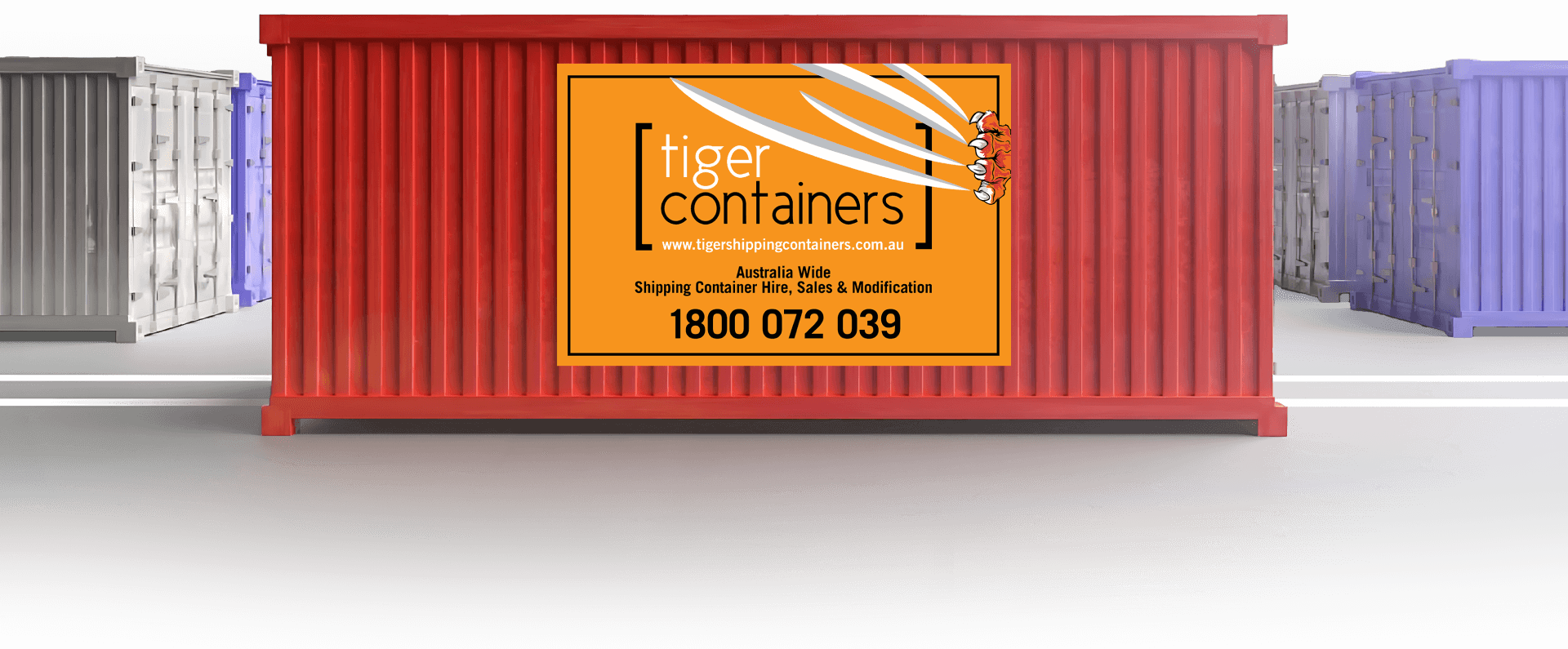
20ft Shipping Container dimensions
One of the most common cargo container sizes is the 20ft shipping container.
What is the size of a 20ft shipping container? Good question! Based on our experience and common industry knowledge, a 20ft shipping container may hold the contents of a one- or two-bedroom apartment or one conventional passenger vehicle.
However, the numbers below will give you the exact measurements of a 20ft container:
Exterior 20ft Container Dimensions
- Height: 8 feet, 6 inches | 2.5908 metres
- High-Cube Height: 9 feet, 6 inches | 2.89 metres
- Width: 8 feet | 2.4384 metres
- Length: 19 feet, 10.5 inches | 6.096 metres
interior 20ft Container dimensions
- Height: 7 feet, 10 inches | 2.3844 metres
- High-Cube Height: 8 feet, 10 inches | 2.698 metres
- Width: 7 feet, 8 inches | 2.348 metres
- Length: 19 feet, 3 inches | 5.8974 metres
- Capacity: 33.150 cubic metres
Popular uses of 20ft shipping container
Twenty-foot shipping containers are popular for a reason: they’re not as small as 10ft containers, but not as large as 40ft shipping containers – that is, their middling size (which fits in most vacant lots) which makes them ideal for a wider range of applications, including (but not limited to) the following:
- General-purpose storage.
- Portable offices
- On-site workshops.
- Mobile classrooms.
- Temporary housing or accommodation.
- Retail pop-up shops.
- Exhibition or trade show booths.
- Portable clinics or medical facilities.
- Container pools.
- Site office.
- Dangerous good containers.
- Container homes.
- Insulated containers.
- Container kitchens.
- Portable lunchrooms.
- Portable laboratories.
- Equipment or machinery storage.
- Shipping and transportation of goods.
- Portable server rooms or data centres.
- Disaster relief and emergency shelters.
- Portable gyms or fitness studios.
- Reefers.
- Art studios or creative spaces.
- Agriculture storage or farming equipment housing.
- Portable ablution blocks.
Australia’s Biggest Brands Trust
tiger shipping containers
So can you






40ft Shipping Container dimensions
The largest of the most in-demand shipping container sizes is the 40ft metal shipping container.
How much can you fit into a 40ft shipping container? Based on industry norms, a 40ft shipping container can hold the contents of a two-or three-bedroom apartment, or two average-sized passenger automobiles. Depending of course on the size of the items being stored inside the container.
For precise measurements, check out the numbers below:
Exterior 40ft Container Dimensions
- Height: 8 feet, 6 inches | 2.5908 metres
- High-Cube Height: 9 feet, 6 inches | 2.89 metres
- Width: 8 feet | 2.4384 metres
- Length: 40 feet | 12.192 metres
interior 40ft Container dimensions
- Height: 7 feet, 10 inches | 2.3844 metres
- High-Cube Height: 8 feet, 10 inches | 2.698 metres
- Width: 7 feet, 8 inches | 2.348 metres
- Length: 39 feet, 5 inches | 12.031 metres
- Capacity: 67.700 cubic metres
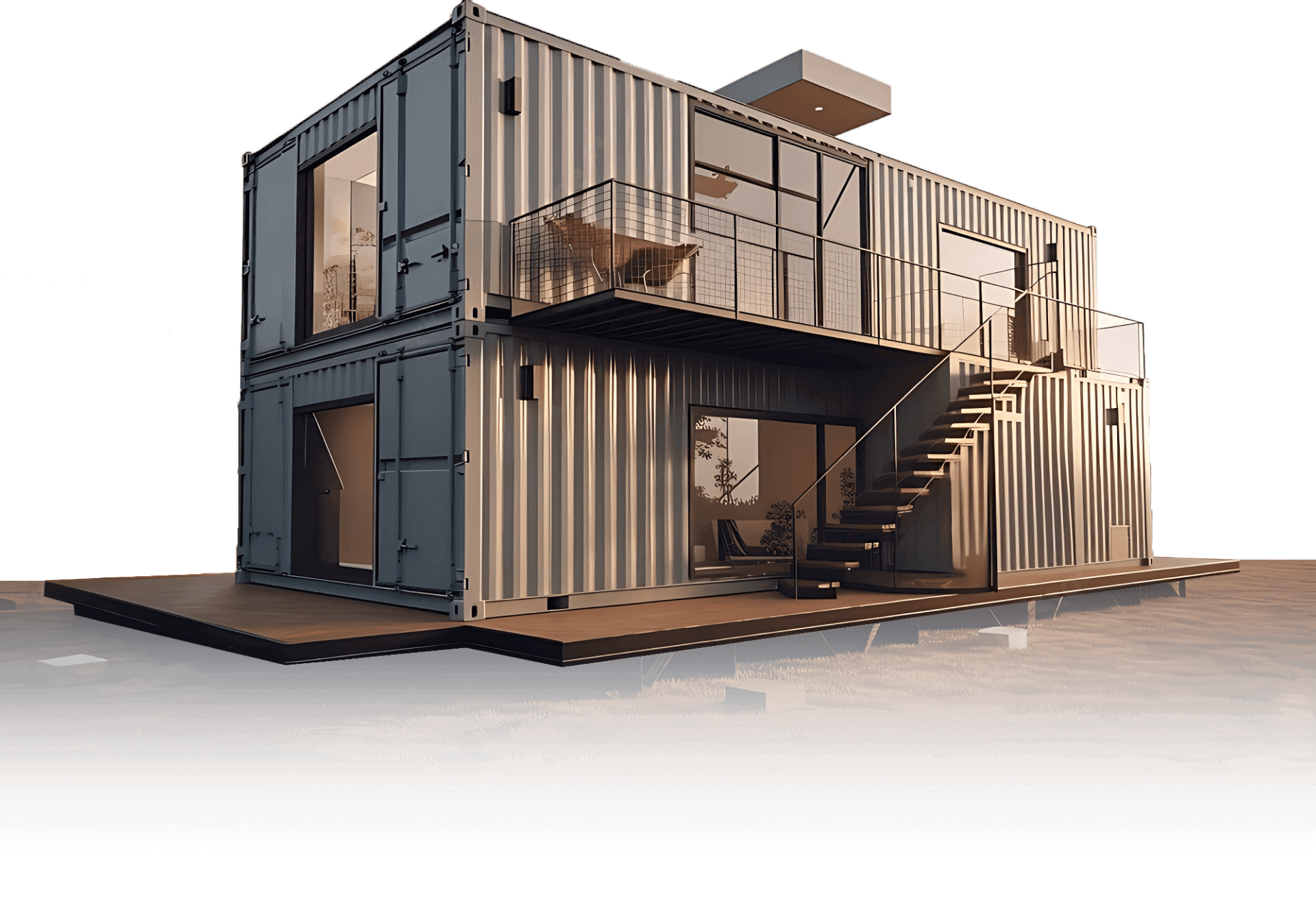
Popular uses of 40ft shipping container
Twenty-foot shipping containers are popular for a reason: they’re not as small as 10ft containers, but not as large as 40ft shipping containers – that is, their middling size (which fits in most vacant lots) which makes them ideal for a wider range of applications, including (but not limited to) the following:
- Large-scale storage solutions.
- Container homes.
- Container pools.
- Warehouse or distribution centres.
- Construction site offices and facilities.
- Portable classrooms or educational centres.
- Temporary housing or accommodation for larger groups.
- Retail spaces or showrooms.
- Mobile restaurants or food trucks.
- Event venues or exhibition halls.
- Container cafes or bars.
- Pop-up art galleries or studios.
- Portable accommodation.
- Ablution blocks.
- Dangerous goods containers
- Reefers.
- Insulated containers.
- Container farms.
- Container bars.
- Container cafes.
- Portable medical clinics or field hospitals.
- Disaster relief and emergency shelters.
- Portable workshops or manufacturing facilities.
- Mining site offices and facilities.
- Military command centers or equipment storage.
- Film production sets or equipment storage.
Let Tiger Shipping Containers Fulfil Your Shipping Container Needs!
Whether you require 10ft, 20ft or 40ft shipping containers for sale and hire, Tiger Shipping Containers is Australia’s largest supplier. And as the biggest supplier of containers in Australia, you can be sure we’ll have the containers you need. From general purpose containers, to refrigerated containers, to side open containers, to high cube containers: whatever you need, Tiger Shipping Containers will have. And as the largest container wholesaler in Australia, we buy in bulk, which means when we sell directly to the general public, we sell at a discount. As we like to say:
“Why pay rack-rate, when you can pay Tiger’s rate!”
Call Tiger Shipping Containers today on 1800 072 039 or fill in the contact form at the top of this page.
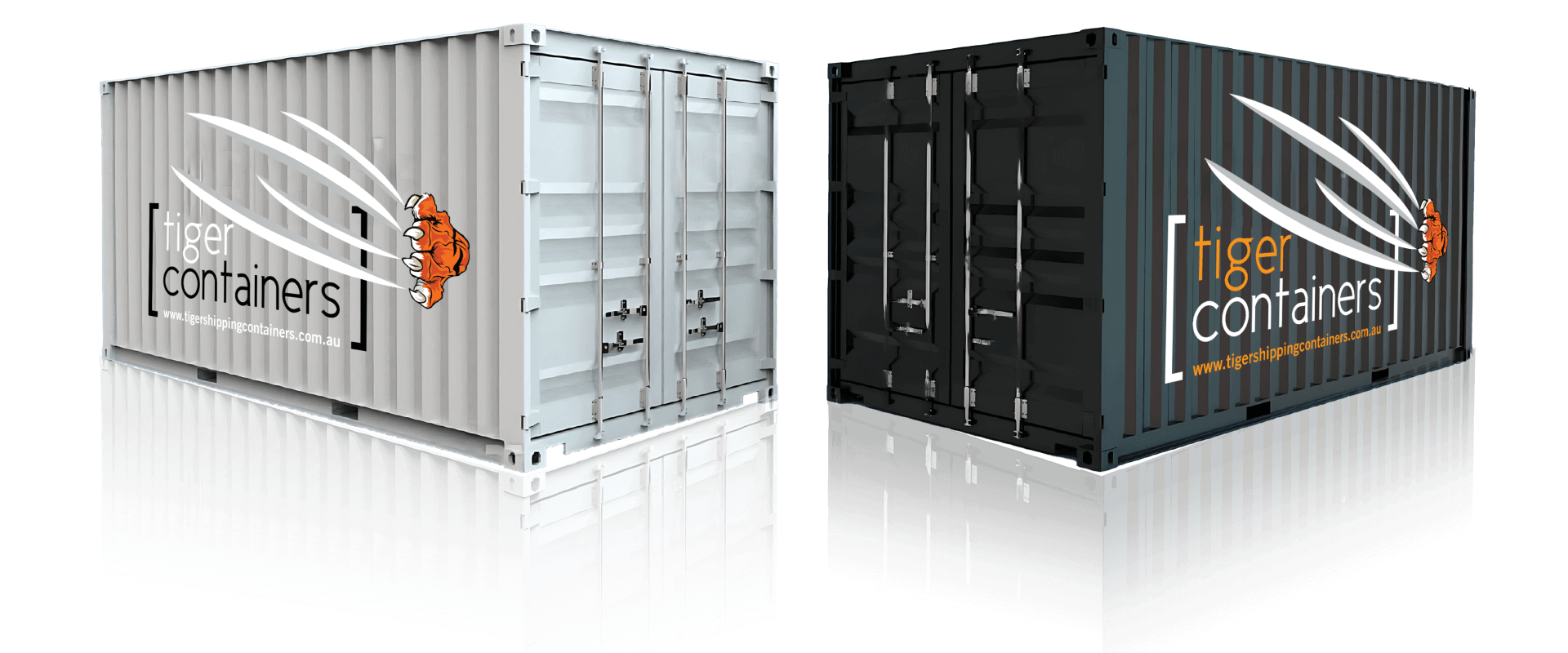
The Different Types Of Shipping Containers
Before you can actually go out and actively hunt down a shipping container to purchase, you have to be sure what type of shipping container best suits your needs.
Many people don’t realise it, but shipping containers actually come in quite a few varieties. Let’s look at what they are:
The General Purpose Container:
This is your stock standard shipping container and is also one of the most popular. It’s great for all those general transportation or secure storage needs. These containers are also perfect for modifying for other uses.
Containers That Are Temperature Controlled:
These are commonly called reefer containers, and with this cargo container you can actually adjust the temperature to suit the cargo you are carrying or storing.
The Open Top Container:
The real advantage of this type of container is they can be loaded from above via a crane. This makes for the perfect solution when you want to ship or store things like heavy machinery. A tarp roof covers the container after loading is complete.
The Flat Rack Container:
Imagine this container as a box of flat-pack furniture. These containers are totally collapsible, making them far easier to move or store.
Dangerous Goods Containers:
Dangerous goods may include things like flammable liquids, toxic substances, explosives, gases, chemicals and so on, and these containers are specially built to safely handle this type of cargo.
Containers For On-Site Offices:
Purpose-built for building and construction sites, this type of container serves as a temporary, moveable on-site office that also offers secure storage at the same time.
The Side Opening Container:
When containers have doors that open from the side, they allow heaps more room to load wider objects, as well as being so much faster to load.
High Cube Shipping Containers:
This is designed specifically for loading and transporting items that are extra tall. With about an extra foot of internal height, the high cube is the ultimate container for those larger than life tasks.
Refrigeration Containers:
If you need to store or transport perishable items that require a constant temperature to keep them from spoiling, then a refrigerated container is the ultimate solution for your needs.
What size shipping container Will you need?
Determining exactly what type or style of shipping container you require is only part of the deal. You’ll also need to be clear on what size you require.
This is something you really need to think about depending on the purpose you have in mind for your container. An example of something to consider would be this:
If you have a business where you’re transporting cargo or products from one part of Australia to another, is the business likely to grow? Will you need a larger shipping container to handle that growth, or would you simply buy another one when the time comes?
There are 3 main sizes for shipping containers:
The 10ft container can be a great choice for those small tasks and for people on a budget. 10ft containers are also cheaper to transport from place to place if that’s a consideration.
The 20ft shipping container is both the most versatile size and the most popular choice. It’s just the right size to suit most peoples’ requirements and is more cost-effective to purchase and/or transport than its giant of a brother, the 40ft container.
The 40 footer is huge and is really suited to those mammoth tasks. One real advantage of a container this size is it works out cheaper to transport one 40ft container than two 20ft containers.
Most people end up opting for a 20ft container for things like storage, transporting cargo, and shipping container modifications.
Work Out Your Budget
Some of your options for choosing the right shipping container will obviously depend on what kind of budget you have to work with.
If money is no barrier, then you could literally choose any shipping container you like for any purpose you desire, but if there are bud
get constraints, then you’ll need to take some time to really narrow down your most necessary requirements, then do some research into the prices of various types and sizes of containers.
In the next two sections, we’ll be looking at both new and used shipping containers, so if money is at a premium, a used shipping container might be the very best option.
New Shipping Container
One of the biggest advantages of a new shipping container – especially when it comes to transporting cargo – is there is no risk of cross-contamination from previous cargo. Your shipping container is shiny and new with no dark and murky history attached to it.
A brand new container also has zero wear and tear from loading and unloading, being moved from place to place, getting banged around on a container ship in rough seas and so on.
And if you are planning on shipping goods overseas, or bringing products back into the country, then a new container will be completely seaworthy and meet all the necessary requirements.
On top of all that, it’s hard to beat something that’s brand new. Yes, it may just be a shipping container and not a brand new Ferrari that’s just come off the production line, but it’s still a pleasure to have something that is in pristine condition.
This is particularly important if you plan to modify your new shipping container into an extra room at home. You don’t need to worry about any unseen contaminants being present. So making a purchase on new containers might be the way to go.
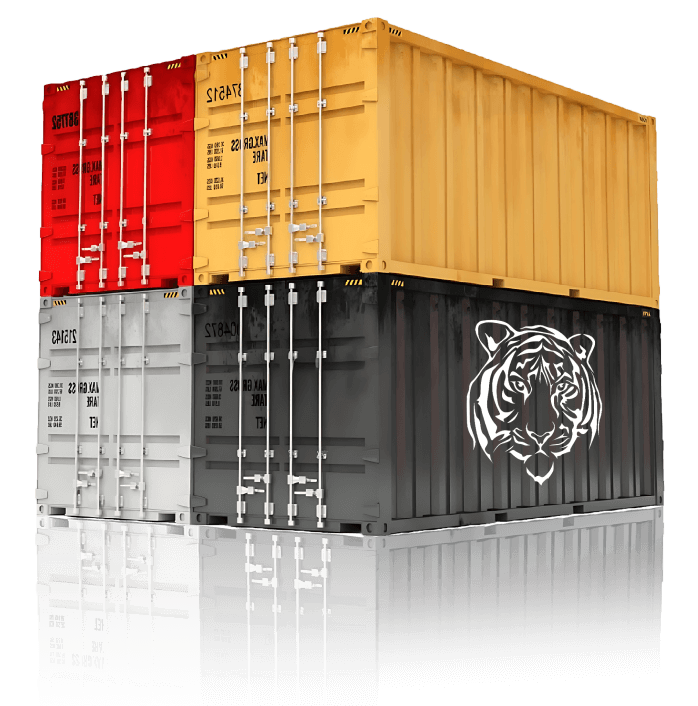
Used Shipping Container
If you plan to purchase a used shipping container, then its condition and history are going to be major considerations. What you plan to use the container for will also come into it, with regards to the quality and cleanliness of a used cargo container.
Some containers have really endured a very hard life with lots of sea travel, knocks, wear and tear and carting and storing all manner of items. In fact, some containers end up in such poor condition that their future usefulness is extremely limited.
To make life easier, used shipping containers are graded according to their condition. So let’s quickly look at those grades so you can determine what quality you require:
A Grade Shipping Containers: These are in the best condition overall and tend to be in the age range of between 8 to 12 years. Seals are intact, surface rust has been removed and primed, the doors close securely, they have very little in the way of dents and scratches, and they are air and watertight.
B Grade Shipping Containers: This grade of the container is a little older at 10 to 14 years. There may be some rust present, but all the seals and doors are good, so the container is still watertight and airtight. A good container for general storage, but not as clean and tidy as an A Grade Container.
C Grade Shipping Containers: Obviously the worst condition of the three grades, but a budget-friendly model of a used shipping container. They are usually older than a B Grade Container, probably a bit dirty and rusty with a few dents, and likely the doors and seals are not water and airtight.
You Need Available Space For Your Shipping Container
This is something that you definitely need to consider.
Will you have the available space to place your newly purchased shipping container?
If it’s to be used for storage at the workplace or the home, will it fit? Also, will the driver delivering the container be easily able to move the container into the desired position unimpeded?
What you don’t want to do is go to the trouble and expense of seeking out and buying a container, only to discover at the last minute that it won’t fit where you wanted to put it.
The ground where it’ll reside also needs to be nice and flat, level and very solid.
Inspect The Containers Before
Making The Purchase
This is particularly important when it comes to purchasing used shipping containers.
Depending on where the container is located, a personal inspection may not always be possible, but if you can inspect, or you know someone in the area who can inspect it for you, then definitely check it over before agreeing to the purchase.
A third option is to hire a qualified inspector to look it over for you. Yes, it’ll cost you some more dollars, but could save you money on the long-term, so it’s well worth considering.
Generally, an online search is one of the easiest ways to locate an inspector within the zone that your shipping container is located.
What About Shipping Container
Modifications?
Something that is super popular these days is modifying shipping containers for all manner of purposes that are vastly different from the original intended use of safely shipping cargo.
Because of their solid steel construction and very easy to work with rectangular shapes, containers are getting converted into all sorts of things.
The other great thing about modifying a shipping container for something else is that they’re easily moved and transported from one location to the next, making them very versatile. They are also extremely secure when you lock them up for the night.
On-site office space for building companies is another very common use for converted shipping containers. These can be fitted out with windows, air vents and whirlybirds in the ceiling for climate control. They can be fully powered too. The biggest advantage of this type of office is it can be easily transported from one construction project to the next.
Australian Government Standards
For Shipping Containers
The Australian Government has some rules to consider if you are planning on purchasing a shipping container for the purposes of moving cargo in and out of the country. This is largely a quarantine issue, with the government wanting to avoid inadvertently bringing any foreign contaminants onto Australian shores.
Before purchasing your container, have a good think about exactly what goods or products you’ll be bringing into the country.
Many kinds of food items are prohibited from being bought into Australia from overseas by the Australian Quarantine and Inspection Service. For this reason, it may not be the best option if you were considering importing certain food items, especially perishable ones.
Therefore, a refrigerated or reefer container is likely not the container for you. Instead, you’d be better off sticking to a standard container of the size you require.
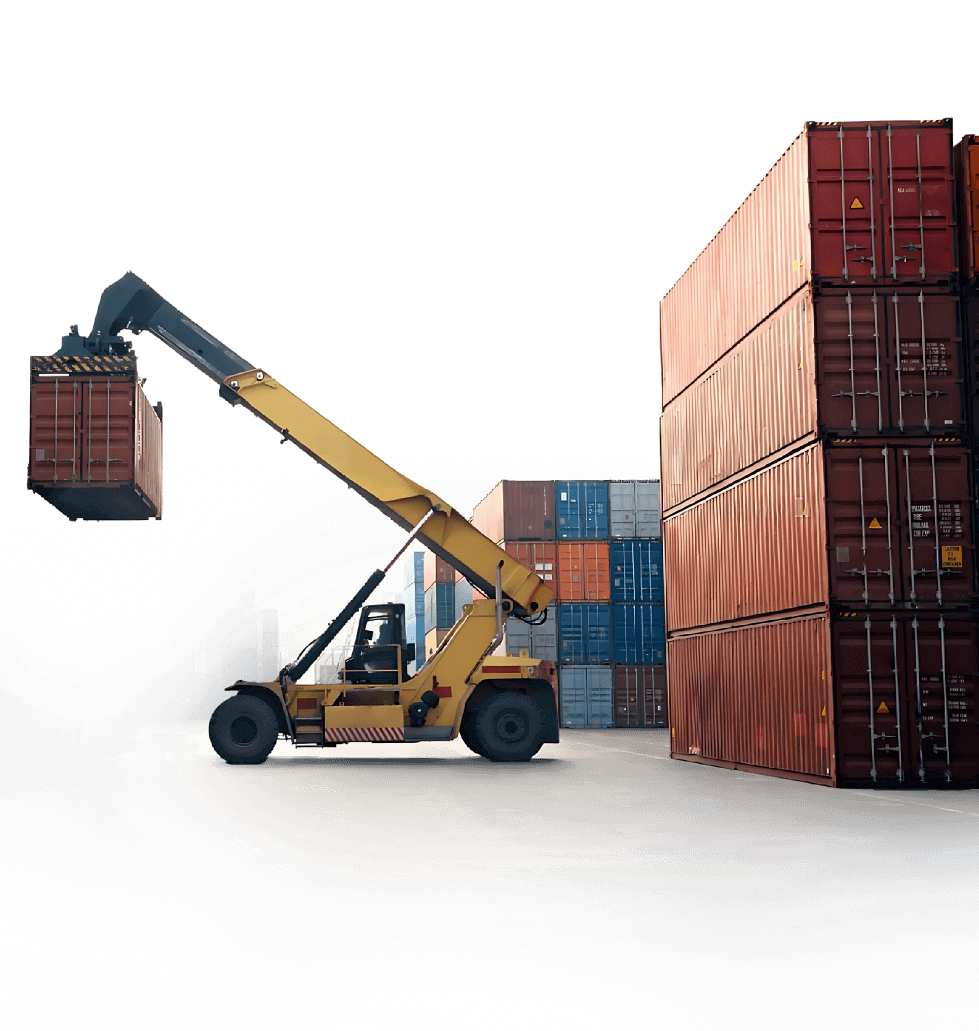
The Australian Government has some rules to consider if you are planning on purchasing a shipping container for the purposes of moving cargo in and out of the country. This is largely a quarantine issue, with the government wanting to avoid inadvertently bringing any foreign contaminants onto Australian shores.
Before purchasing your container, have a good think about exactly what goods or products you’ll be bringing into the country.
Many kinds of food items are prohibited from being bought into Australia from overseas by the Australian Quarantine and Inspection Service. For this reason, it may not be the best option if you were considering importing certain food items, especially perishable ones.
Therefore, a refrigerated or reefer container is likely not the container for you. Instead, you’d be better off sticking to a standard container of the size you require.
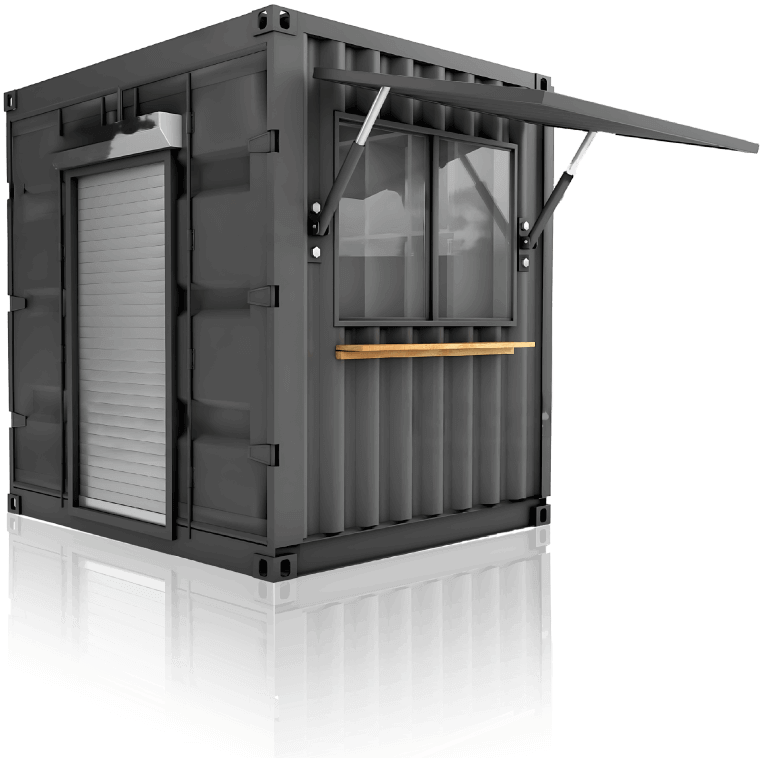
What About Shipping Container
Modifications?
Your purchase of shipping containers is only going to be a success if you choose the right supplier to buy from. For easy reference, let’s make a quick list of tips and questions to keep in mind when choosing a reputable supplier:
- How long has the company been in business?
- Do they have a good overall reputation?
- Are there any independent reviews of the company online?
- Are they friendly and knowledgeable when you contact them?
- What are their prices like? Do they sound fair and reasonable? Have you compared prices with other suppliers?
- Will they deliver to your area?
- How much are the delivery costs and what are the likely timeframes for delivery?
- Is there any warranty or guarantee on their shipping containers, particularly used containers?
- Does the container company have depots Australia-wide?
- Is it an Australian owned company or under foreign ownership?
- Do they sell both new and used shipping containers?
- Does the company actually stock the size and type of cargo container you’re after?
- If required, can the company perform quality container modifications for you?
You Need Available Space For Your Shipping Container
- First work out exactly what you intend to use your shipping container for, whether it’s a single task or multiple uses.
- Will you need a container on a temporary or more permanent basis?
- Get to know the different types of shipping container available and which one will suit you best.
- What size cargo container do you need? Is 10ft too small? Is the 40 footer just way too big?
- You need to know your budget first before you can start shopping for a shipping container.
- Brand new VS used shipping containers. If you go with a used one, determine the quality standard your intended purpose will require.
- Do you have somewhere suitable to actually put your shipping container?
- Be sure to inspect (or have someone inspect) the container before committing to the purchase.
- Familiarise yourself with the potential of shipping container modifications.
- Understand Australian Government laws regarding using your container for import/export.
- Choosing the very best shipping container supplier.
